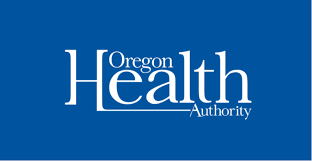State eyes equity-focused path forward as Omicron surge wanes
PORTLAND, Ore. — As the state’s mask requirements begin lifting due to rapidly declining COVID-19 cases and hospitalizations, Oregon Health Authority (OHA) is kicking off the recovery phase of its pandemic response, with a focus on building community resilience and supporting local decision-making.
OHA today launched RISE: Resilience in Support of Equity, available at Oregon.gov/OregonRise, the state’s pandemic recovery plan. The plan outlines near-term priorities Oregon will pursue to monitor COVID-19, shield people at highest risk, reinvigorate communities and repair the state’s social fabric as public health interventions fall away over the coming months.
RISE is a five-point plan aimed at saving lives by strengthening the resilience of people, schools and communities so they can protect themselves from COVID-19. Its goals are to:
- Protect communities most harmed by COVID-19, including distributing vaccines, tests and masks to people at risk in priority communities through partnerships with more than 175 local nonprofits, health clinics and other community groups.
- Protect people most vulnerable to COVID-19, including tracking disease spread through wastewater sampling in more than 40 communities, and maintaining a baseline capacity of vaccines, treatments, testing supplies and laboratory capabilities.
- Expand access to vital health care and support a thriving workforce, including maintaining or expanding health coverage to as many as 350,000 people, and distributing $200 million in workforce development grants.
- Keep schools open for students, staff and families, and help students recover instructional time, including developing a communicable disease management plan to help schools open safely, manage COVID-19 outbreaks and support students’ mental health.
- Restore social cohesion by listening to and supporting the priorities of local communities, and sharing steps people can take to protect themselves and others, including offering listening sessions and seeking input on how the state can support communities in building health resilience.
“The pandemic has become like a wildfire we’ve contained but not extinguished, and which therefore continues to pose a risk,” said OHA Director Patrick Allen. “RISE is a plan for managing that wildfire in a way that leverages the ability of communities to fight it at the local level, with support from Oregon’s public health system.”
The plan recognizes the accomplishments of residents and communities to help Oregon reach a relatively steady state in the pandemic: More than 8 in 10 people followed science-based health recommendations, such as getting vaccinated or wearing a mask indoors in public or limiting in-person gatherings, helping force COVID-19 infections to drop 94% since the peak of the Omicron surge and hospitalizations to drop to pre-Omicron levels.
Oregon now ranks second lowest in the country for COVID-19 cases per 100,000 people; seventh lowest for deaths; a third lower than the per-capita average for hospitalizations; 18th highest in percentage of fully vaccinated residents; and 10th highest in percentage of eligible residents who received a booster dose.
But the plan also paints a sobering picture of the health inequities resurfaced during the pandemic, and the historical and intergenerational trauma and systemic discrimination driving them: COVID-19 infection rates nearly twice as high for Oregon’s tribal communities and communities of color than for whites; death rates more than twice as high among these groups than for whites, particularly in tribal and Pacific Islander communities; higher rates of infection and severe outcomes for older adults and those in disability communities.
In response, Oregon has pursued a multi-pronged strategy to support communities hardest hit by the pandemic and eliminate the health inequities the pandemic has worsened. This strategy includes:
- Ensuring equity at the heart of the state’s response, including collaborating with communities to apply an equity framework to policy and operational decisions throughout the pandemic.
- Working closely with local and tribal governmental public health agencies in responding to COVID-19 and other important public health issues.
- Partnering with more than 175 community-based organizations that have long-standing, trusted relationships with priority communities to provide health and social services to save lives and livelihoods.
- Organizing hundreds of grassroots, community-specific vaccination and testing clinics.
- Combatting misinformation and disinformation, raising awareness and providing health information through culturally responsive outreach in 12 languages.
A critical tool RISE will use to accomplish this is Healthier Together Oregon, the state’s health improvement plan. Healthier Together Oregon is a community-driven, statewide health improvement plan designed to mobilize local solutions that address social factors affecting community health, such as access to housing, living-wage jobs, quality education and affordable health care. Through Heathier Together Oregon, community-generated priorities and strategies will inform the way health officials invest resources in coming months and beyond.
“Healthier Together Oregon is how we will eliminate health inequity,” Allen said. “Its vision is that our state will be a place where everyone in Oregon can achieve health and well-being throughout their lives, long after the COVID-19 pandemic is in our rearview mirror.”
###











